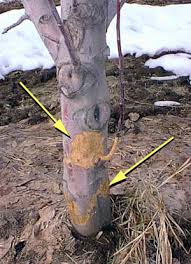News
Preventing Girdling Injury To Your Trees And Bushes
 The heavy and persistent snows of winter during 2013 and 2014 meant that animals who otherwise would have found alternate sources of food turned to trees and bushes for sustenance instead. This kind of plant injury is called girdling, and you may find several patterns of it throughout your landscaping depending on several factors.
The heavy and persistent snows of winter during 2013 and 2014 meant that animals who otherwise would have found alternate sources of food turned to trees and bushes for sustenance instead. This kind of plant injury is called girdling, and you may find several patterns of it throughout your landscaping depending on several factors.
The first factor of tree girdling is the snow pattern. During less snowy winters, animals can forage about looking for more usual nutrient-dense sources, but if there is snow, and particularly if that snow has a frozen shell to it, wildlife must use what they can find, and trees and shrubs are it. Plants that are heavily mulched or surrounded by high grasses or weeds are also more vulnerable.
The second factor of is the animals living within your geographical area. Voles and mice will devour the bark at the soil line, while rabbits will gnaw parallel with the snow line which may vary throughout the winter season. They seek the plant’s sugar-rich transport tissue, or phloem. Unfortunately a healthy phloem is vital for life and growth, and once it’s gone the plant is severely compromised.
The best way to prevent tree girdling to to enclose the trunks of your vulnerable trees and shrubs with chicken wire, hardware cloth, or plastic drainage pipe, making sure to bury it several inches below the surface so the smallest critters can’t get to the bark. Whatever you use to cover your trees should also be higher than the highest anticipated snow level to protect it from rabbits as well. Shoveling around trees and bushes will also help keep the animals away.
If you find that your trees have suffered girdling damage come spring, you will need to consult a trained arborist because the only real intervention that will work is a bridge graft, which involves grafting scion sticks a quarter to a half inch in diameter into live tissue of bark cambium both above and below the damage – thus, acting as a bridge. This needs to be done in late April as trees are coming out of dormancy, but the scion sticks should be selected ahead of time. If you need advice on how to best care for any problems your trees or shrubs experience, girdling or no, do not hesitate to contact an expert at Chop. Our job is to make sure your trees are in the best possible health during all four seasons, regardless of the stress they experience.
